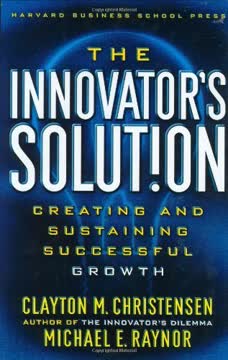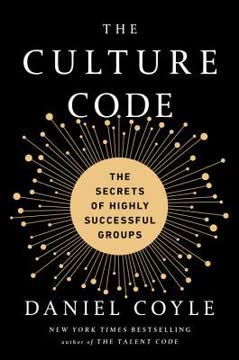Key Takeaways
1. Leadership Pipeline: A Framework for Developing Leaders at Every Level
Succession planning is perpetuating the enterprise by filling the pipeline with high-performing people to ensure that every leadership level has an abundance of these performers to draw from, both now and in the future.
The Leadership Pipeline model provides a comprehensive framework for developing leaders at all organizational levels. It recognizes that leadership requirements change as individuals move up the hierarchy, demanding different skills, time applications, and work values at each stage. This model helps organizations:
- Identify and develop potential leaders systematically
- Ensure a consistent supply of capable leaders at all levels
- Align leadership development with specific organizational needs
By implementing the Leadership Pipeline approach, companies can create a sustainable competitive advantage through their leadership talent. This model is particularly crucial in today's fast-paced business environment, where the demand for effective leaders often exceeds the supply.
2. Six Leadership Passages: Mastering Skills, Time Applications, and Values
Though there are other, minor passages between these six major ones, we don't want to become bogged down in detail at this point. For our purposes here, it's important simply to understand what these six are all about.
The six major leadership passages represent critical transitions in a leader's career, each requiring new skills, time applications, and work values:
- Managing self to managing others
- Managing others to managing managers
- Managing managers to functional manager
- Functional manager to business manager
- Business manager to group manager
- Group manager to enterprise manager
Each passage demands that leaders let go of some skills and behaviors that made them successful at the previous level while acquiring new ones. Mastering these transitions is crucial for long-term leadership success and organizational effectiveness.
3. From Managing Self to Managing Others: The First Crucial Transition
When people are appointed to their first management positions, they often think they have it made. All their hard work as an individual contributor has finally been rewarded, and they see a management assignment as a cause for celebration.
The first leadership passage is often the most challenging and critical. New managers must shift from:
- Doing the work themselves to getting work done through others
- Valuing individual achievements to valuing team success
- Technical proficiency to people management skills
Key skills to develop:
- Planning and delegating work
- Motivating and coaching others
- Setting performance standards
- Providing constructive feedback
This transition requires a significant mindset shift, as new managers must learn to derive satisfaction from others' success rather than their own individual accomplishments.
4. Developing Managers of Managers: Building the Leadership Foundation
Few companies address this passage directly in their training, even though this is the level where a company's management foundation is constructed; level-two managers select and develop the people who will eventually become the company's leaders.
Managers of managers play a crucial role in building the organization's leadership foundation. They must:
- Select and develop first-line managers effectively
- Hold first-line managers accountable for managerial work
- Allocate resources among units
- Manage boundaries between units
Key responsibilities:
- Coaching and developing first-line managers
- Creating a supportive environment for learning
- Thinking strategically about the function's contribution to the business
- Breaking down silos and fostering cross-functional collaboration
Developing strong managers of managers is essential for creating a robust leadership pipeline and ensuring effective leadership at all levels of the organization.
5. Functional to Business Leadership: Thinking and Acting Holistically
As managers step out of their traditional functional role and become responsible for a full spectrum of activities, they need to take the time to learn about the key ingredients of individual disciplines and how they integrate from a total business viewpoint to produce results.
The transition to business leadership requires a significant shift in perspective and skills:
- From functional expertise to business-wide understanding
- From tactical thinking to strategic planning
- From managing a single function to integrating multiple functions
Key areas of growth:
- Developing a profit-and-loss mindset
- Understanding and valuing all functions equally
- Managing complexity and making trade-offs
- Thinking long-term while delivering short-term results
This passage is often one of the most challenging, as leaders must broaden their focus and learn to balance multiple competing priorities across the entire business.
6. Group Leadership: Succeeding Through Others' Success
A group manager values the success of other people's businesses. A business manager values the success of his own business. This is a critical distinction because some people only derive satisfaction when they're the ones receiving the lion's share of the credit.
Group leaders must shift their focus from direct management to indirect influence:
- Valuing and developing business managers
- Allocating resources across multiple businesses
- Creating synergies within the group
- Managing the group's relationship with the larger corporation
Key skills:
- Portfolio strategy development
- Coaching and mentoring business managers
- Capital allocation and investment decisions
- Balancing short-term results with long-term growth
The success of group leaders depends on their ability to empower and develop strong business managers while maintaining a strategic view of the entire group's performance.
7. Enterprise Leadership: Balancing Short-Term Results and Long-Term Vision
Enterprise leaders need to come to terms with the fact that their performance as a CEO will be based on three or four high-leverage decisions annually; they must set these three or four mission-critical priorities and focus on them.
Enterprise leaders (CEOs) face unique challenges:
- Delivering consistent financial results
- Setting overall enterprise direction
- Shaping company culture and values
- Maintaining execution excellence
- Managing in a global context
Key focus areas:
- Balancing short-term performance with long-term sustainability
- Communicating vision and strategy to diverse stakeholders
- Making high-stakes decisions with far-reaching consequences
- Developing and managing a high-performing executive team
Enterprise leaders must learn to delegate operational details while maintaining a broad perspective on the entire organization's health and future direction.
8. Diagnosing Pipeline Problems: Identifying Misaligned Leaders
Just about every organization has people working at the wrong leadership levels.
Common pipeline problems include:
- Leaders operating at levels below their current position
- High-potential individuals skipping crucial development stages
- Managers struggling to let go of skills and behaviors from previous levels
Signs of pipeline problems:
- Micromanagement from senior leaders
- Lack of strategic thinking at higher levels
- Poor development of subordinates
- Difficulty in succession planning
Diagnosing these issues requires a clear understanding of the skills, time applications, and values required at each leadership level. Regular assessments and feedback can help identify misalignments and guide corrective action.
9. Performance Improvement: Setting Clear Standards for Each Level
Well-defined performance standards therefore are crucial. Without them, it's virtually impossible to convey leadership expectations and requirements.
Effective performance improvement requires:
- Clear role definitions for each leadership level
- Specific performance standards aligned with level requirements
- Regular feedback and coaching
Key components of performance standards:
- Operating results (financial and operational metrics)
- Leadership behaviors and competencies
- People development and team performance
- Strategic contribution and long-term impact
By setting and communicating clear standards, organizations can better assess leadership performance, identify development needs, and guide career progression through the leadership pipeline.
10. Succession Planning: Filling the Pipeline with High-Performers
The focus should be performance. High performance in the present is the admission price for future growth and development.
Effective succession planning involves:
- Identifying high-performers at all levels
- Assessing leadership potential based on current performance
- Providing targeted development opportunities
- Creating a continuous flow of leaders through all passages
Key strategies:
- Regular talent reviews and assessments
- Clear definitions of potential (turn, growth, and mastery)
- Alignment of development plans with business strategy
- Balanced focus on short-term and long-term leadership needs
A robust succession planning process ensures that organizations have a steady supply of capable leaders ready to step into key roles at all levels of the pipeline.
11. Coaching: Using the Pipeline Model for Effective Development
Coaching with the Pipeline model rather than the problem in the spotlight is not always an easy task. Managers often are tempted to "fix it" and deal with the problem rather than with the individual's leadership capability.
Effective coaching using the Leadership Pipeline model:
- Focuses on developing leadership capabilities, not just fixing problems
- Helps individuals understand their current level and future requirements
- Encourages reflection on skills, time applications, and values
Key coaching strategies:
- Using the pipeline framework to provide context for development
- Encouraging leaders to "let go" of behaviors that no longer serve them
- Helping individuals see their place in the larger leadership continuum
- Balancing current performance with future potential
By framing coaching conversations within the Leadership Pipeline model, managers can provide more targeted and impactful development support to their team members.
12. Creating a Leadership Development Culture: Marriott's Success Story
Marriott's leadership development system provides managers with tools to make informed decisions about the allocation of scarce development resources.
Marriott's approach to leadership development demonstrates how to implement the Leadership Pipeline model effectively:
- Senior leadership commitment and accountability
- Integration of leadership development with business strategy
- Clear competency models aligned with pipeline levels
- Use of technology to scale development efforts
Key elements of Marriott's system:
- Leadership Talent Development Inventory (LTDI)
- Web-based assessment and development tools
- Regular talent review sessions
- Emphasis on on-the-job learning and challenging assignments
Marriott's success shows how a systematic approach to leadership development, grounded in the Leadership Pipeline model, can create a sustainable competitive advantage through a strong leadership bench at all levels.
Last updated:
FAQ
What's The Leadership Pipeline about?
- Leadership Development Framework: The Leadership Pipeline by Ram Charan presents a model for developing leaders at various organizational levels, focusing on the skills, time applications, and work values needed at each stage.
- Six Leadership Passages: It identifies six critical transitions leaders must navigate, from managing self to enterprise management, each requiring a shift in mindset and capabilities.
- Succession Planning Focus: The book serves as a guide for building a robust leadership pipeline, ensuring organizations can identify, develop, and promote talent effectively.
Why should I read The Leadership Pipeline?
- Practical Insights: The book offers actionable insights and frameworks applicable in real-world settings, helping leaders understand role nuances and expectations.
- Addressing Leadership Gaps: It tackles common pitfalls in leadership development, such as inadequate preparation for new roles, preventing costly mistakes.
- Enhancing Performance: Implementing its strategies can improve organizational performance and ensure a steady flow of capable leaders.
What are the key takeaways of The Leadership Pipeline?
- Understanding Leadership Passages: Recognizing the six leadership passages is crucial for effective development, as each requires different skills and values.
- Role Clarity Importance: Clear expectations and accountability at each level prevent confusion and equip leaders for success.
- Focus on Development: Continuous development and coaching are essential for successful transitions, with organizations investing in training and support.
What are the six leadership passages outlined in The Leadership Pipeline?
- Passage One: From Managing Self to Managing Others - Involves shifting from individual contributor roles to managing a team, requiring delegation and coaching skills.
- Passage Two: From Managing Others to Managing Managers - Leaders must empower and develop first-line managers, focusing on strategic oversight.
- Passage Three: From Managing Managers to Functional Manager - Requires a broader perspective, integrating multiple functions and strategic thinking.
How does The Leadership Pipeline define effective leadership?
- Skill Adaptation: Effective leadership involves adapting skills and values to meet each leadership level's demands, evolving through the pipeline.
- Focus on Results: Leaders should prioritize achieving results through others, fostering team success and organizational growth.
- Long-Term Vision: Successful leaders balance immediate needs with strategic goals, ensuring sustainable success.
What role does coaching play in The Leadership Pipeline?
- Essential for Development: Coaching is critical for leadership development, helping leaders acquire necessary skills and values for new roles.
- Encourages Reflection: It encourages leaders to reflect on experiences and learn from mistakes, vital for growth and adaptation.
- Builds Accountability: Coaching establishes accountability for leaders’ performance and development, ensuring responsibility for progress and team success.
How does The Leadership Pipeline address succession planning?
- Structured Approach: Provides a framework for systematically identifying and developing future leaders, ensuring a steady talent flow.
- Focus on Potential: Prioritizes identifying individuals with leadership potential over past performance, cultivating a diverse future leader pool.
- Continuous Development: Organizations must commit to ongoing development and support, preparing individuals for leadership roles.
What are the specific skills required at each leadership level in The Leadership Pipeline?
- First-Line Managers: Skills include effective delegation, performance management, and team building, balancing task management and team development.
- Business Managers: Require strategic thinking, financial acumen, and integrating functional strategies into a cohesive business plan.
- Enterprise Managers: Need visionary leadership, organizational strategy, and managing complex relationships, prioritizing enterprise health.
How can organizations implement the Leadership Pipeline model effectively?
- Establish Clear Expectations: Communicate required skills, time applications, and work values at each level, helping leaders understand expectations.
- Invest in Development: Prioritize ongoing training and coaching, essential for helping leaders navigate transitions.
- Monitor Progress: Regular assessments and feedback identify struggling leaders, addressing issues for a smooth pipeline flow.
What are common pitfalls leaders face during transitions in The Leadership Pipeline?
- Clinging to Old Roles: Leaders struggle with letting go of previous responsibilities, leading to micromanagement and lack of delegation.
- Inadequate Preparation: Insufficient training or support can result in confusion and poor performance during transitions.
- Failure to Adapt: Leaders who don't adjust values and priorities may struggle, leading to a disconnect between actions and expectations.
What are the best quotes from The Leadership Pipeline and what do they mean?
- “The worst-case scenario for poor selection was always thought to be hiring the wrong person.”: Highlights the importance of selecting the right candidates for leadership roles, suggesting that failing to recognize potential leaders can be more detrimental.
- “Jobs should be defined by accountability for a set of results.”: Emphasizes focusing on outcomes rather than activities, encouraging a results-oriented mindset.
- “The pipeline model helps people make superior selection decisions.”: Underscores the model's effectiveness in guiding organizations to choose the right leaders, suggesting a structured approach leads to better outcomes.
How does The Leadership Pipeline address the issue of skipping levels in leadership development?
- Consequences of Skipping Levels: Skipping levels can lead to significant gaps in leadership capabilities, resulting in poor performance and dysfunction.
- Importance of Mastery: Leaders must master skills and values at each level before advancing, ensuring preparedness for new roles.
- Structured Development Path: Encourages investing in leader growth at every level, preventing pitfalls associated with skipping levels.
Review Summary
The Leadership Pipeline receives mostly positive reviews for its insightful framework on leadership development stages. Readers appreciate its practical advice for navigating career transitions and building organizational talent. Many find it valuable for understanding leadership roles at different levels. Some criticize the writing style as dry or repetitive, but most agree the content is highly useful. The book is frequently recommended for managers and aspiring leaders, with readers praising its potential to change perspectives on leadership development.
Similar Books










Download PDF
Download EPUB
.epub digital book format is ideal for reading ebooks on phones, tablets, and e-readers.









